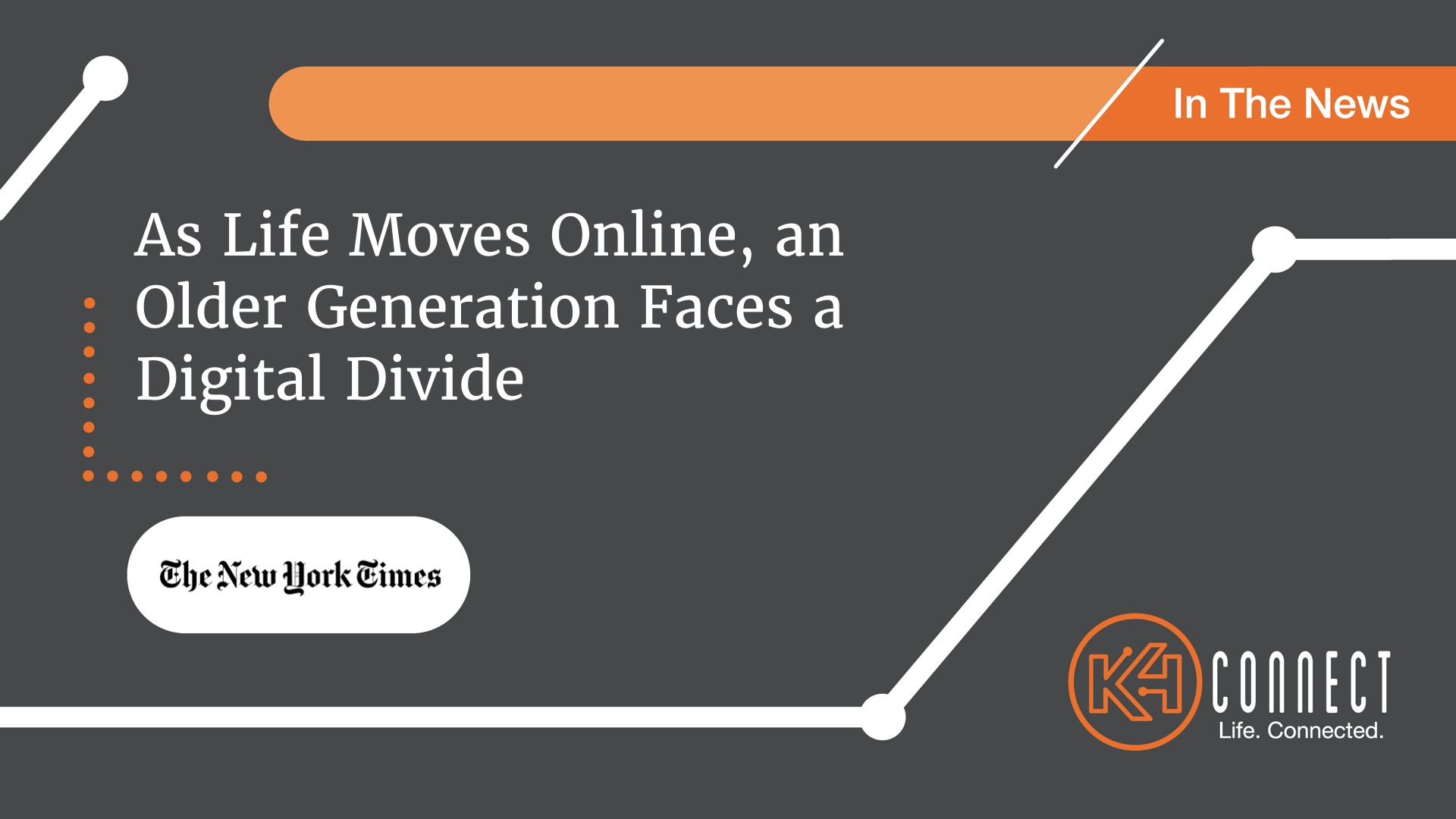K4Connect and customer, Rich Williams, HHHunt SVP of Senior Living, spoke with the New York Times about how senior living residents are leaning on technology during COVID-19.
By: Erin Griffith and Kate Conger
March 27, 2020
As life has increasingly moved online during the pandemic, an older generation that grew up in an analog era is facing a digital divide. Often unfamiliar or uncomfortable with apps, gadgets and the internet, many are struggling to keep up with friends and family through digital tools when some of them are craving those connections the most.
While teenagers are celebrating birthdays over Zoom with one another, children are chatting with friends over online games and young adults are ordering food via delivery apps, some older people are intimidated by such technology. According to a 2017 Pew Research study, three-quarters of those older than 65 said they needed someone else to set up their electronic devices. A third also said they were only a little or not at all confident in their ability to use electronics and to navigate the web.
That is problematic now when many people 65 and older, who are regarded by the Centers for Disease Control and Prevention as most at risk of severe illness related to the coronavirus, are shutting themselves in. Many nursing homes have closed off to visitors entirely. Yet people are seeking human interaction and communication through the web or their devices to stave off loneliness and to stay positive.
In nursing homes that have stopped visitors from coming in to limit the spread of the virus, workers are leaning on tech to help residents stay connected with their families.
At 23 senior living communities in North Carolina, Maryland and Virginia run by Spring Arbor Senior Living, workers have been triaging family calls — sometimes multiple ones a day per resident — over Apple’s FaceTime, Skype and a software system operated by K4Connect, a tech provider, said Rich Williams, a senior vice president at HHHunt, which owns the centers.
“That line of communication is essential to the resident’s well-being,” he said.
Mr. Williams added that workers had also used virtual activities like Nintendo’s Wii bowling and SingFit, a music singalong program, to help Spring Arbor’s 1,450 residents — whose average age is 88 — pass the time and stay active.
Read the full New York Times piece, here!
Kate Conger is a technology reporter in San Francisco, covering privacy, policy and labor. Previously, she wrote about cybersecurity for Gizmodo and TechCrunch. @kateconger
Erin Griffith reports on technology start-ups and venture capital from the San Francisco bureau. Before joining The Times she was a senior writer at WIRED and Fortune. @eringriffith

